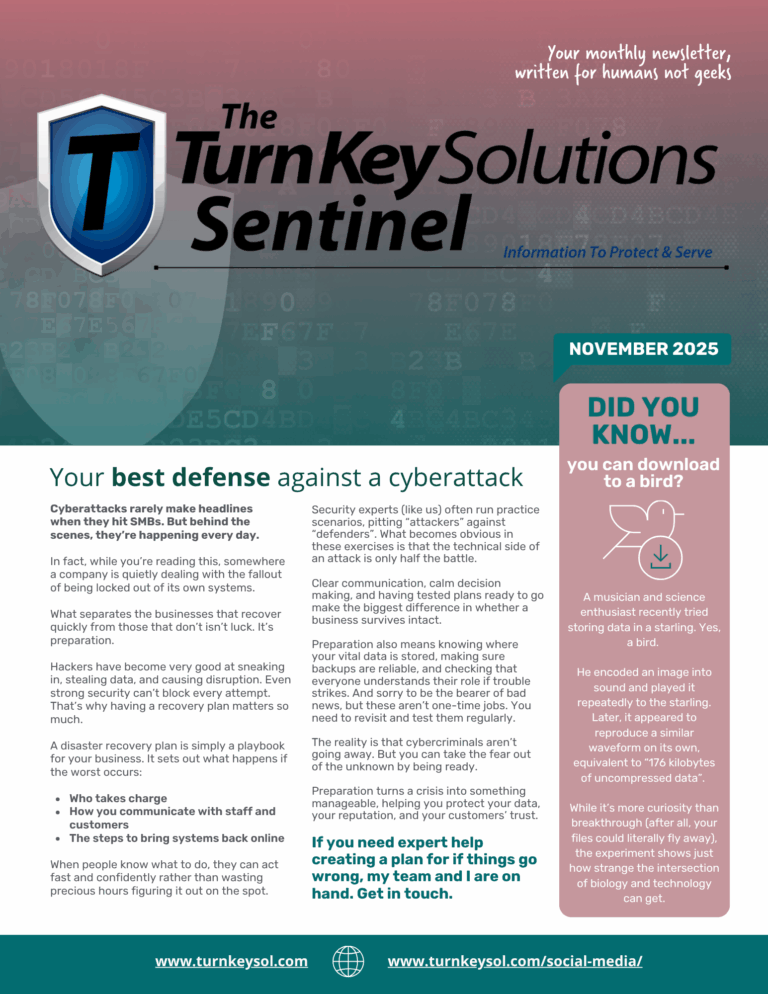
 Remote work is no longer a temporary trend; it has become a permanent fixture in the modern workplace. For small and medium-sized businesses (SMBs) across the U.S., this shift has brought flexibility, access to a wider talent pool, and improved employee satisfaction. However, it also introduces new cybersecurity risks that can jeopardize company data, customer trust, and long-term growth.
Remote work is no longer a temporary trend; it has become a permanent fixture in the modern workplace. For small and medium-sized businesses (SMBs) across the U.S., this shift has brought flexibility, access to a wider talent pool, and improved employee satisfaction. However, it also introduces new cybersecurity risks that can jeopardize company data, customer trust, and long-term growth.
To thrive in this evolving environment, businesses must go beyond securing office networks. They need to safeguard every device, connection, and digital asset employees use, whether at home, in a coffee shop, or across the globe. That’s where endpoint protection and remote asset security come into play.
The Remote Work Revolution and Its Cybersecurity Challenges
Key Security Challenges for Remote Workforces
-
Larger Attack Surface: Unlike centralized office environments, remote workers use personal laptops, mobile devices, and home Wi-Fi, creating more entry points for cybercriminals.
-
Low Employee Awareness: Without proper training, employees may unknowingly fall victim to phishing scams or unsafe practices.
-
Infrastructure Vulnerability: Public Wi-Fi in libraries, airports, or coffee shops leaves data transmissions vulnerable to interception.
-
Unmonitored Assets: Businesses often lack visibility into what devices employees use, making it difficult to enforce security standards.
Cybercriminals are well aware of these weaknesses, and they actively exploit them. That’s why SMBs need proactive, layered defense strategies.
Why Endpoint Protection Is Essential for Remote Work Security
Endpoints are the devices employees use to perform their jobs: laptops, smartphones, tablets, and even IoT devices like smart printers or connected cameras. For hackers, these endpoints are prime targets, because breaching just one device can expose the entire company network.
Think of it like this: if your business network is a castle, endpoints are the doors and windows. You wouldn’t leave those unlocked, right?
Remote work makes this even trickier. Employees might be using personal devices, connecting through unsecured Wi-Fi, or downloading files from unknown sources. Without endpoint protection, these everyday actions can open the door to malware, ransomware, or phishing attacks.
Modern endpoint protection tools go beyond traditional antivirus software. They use AI to detect suspicious behavior, block threats in real time, and even isolate infected devices before damage spreads. It’s like having a smart security system that learns and adapts, keeping your business safe no matter where your team logs in from.
What Endpoint Protection Does
Modern endpoint protection platforms (EPPs) go far beyond traditional antivirus software. They use a multi-layered approach, including:
-
Next-Gen Firewalls – to filter malicious traffic.
-
Anti-Malware & Ransomware Protection – to block advanced threats.
-
AI-Powered Threat Detection – to recognize and stop zero-day attacks.
-
Real-Time Monitoring – to quickly detect unusual behavior and prevent breaches.
Think of endpoint protection as a digital bodyguard that shields employees no matter where they work. For example, if an employee accidentally clicks on a phishing PDF while working at a coffee shop, endpoint protection can intercept the threat before it compromises company data.
Get Help Securing Your Remote Workforce Today!
Building a Secure Foundation: Asset Security for Remote Teams
While endpoint protection is critical, it’s only one piece of the puzzle. Securing your digital assets, including devices, accounts, applications, and sensitive data, is just as important. Think of asset security as the foundation that supports your entire cybersecurity strategy.
Without proper asset security measures, businesses risk unauthorized access to internal systems, data breaches that can damage customer trust, and regulatory compliance issues that lead to fines or legal trouble.
Remote teams often use a mix of personal and company-issued devices, cloud-based tools, and shared networks. This creates a complex environment where visibility and control can easily slip through the cracks.
Best Practices for Remote Asset Security
-
Awareness & Training: Regular cybersecurity training ensures employees understand safe practices, like avoiding suspicious links and securing their home Wi-Fi.
-
Company-Issued Devices: Supplying managed devices gives IT teams greater control over security software and system updates.
-
Zero-Trust Framework: Adopt a “never trust, always verify” approach. Require multi-factor authentication (MFA) for all users and devices.
-
AI-Powered Analytics: Use artificial intelligence and machine learning to detect anomalies, such as unusual login times or device behaviors.
By combining endpoint protection with strong asset management, SMBs can drastically reduce risks while still supporting the flexibility employees want.
Protecting Your Remote Workforce Starts with Understanding Your Risks.
The Business Case: Protecting Growth and Customer Trust
Cybersecurity isn’t just about avoiding losses; it’s about unlocking growth and building trust. When employees feel secure in their digital environment, they’re more productive, more confident in their tools, and more loyal to the organization. That sense of safety translates directly into better performance and stronger team morale.
But it doesn’t stop there. Customers are increasingly aware of how businesses handle their data. They want to know that their information is safe, and they’re more likely to choose companies that demonstrate strong cybersecurity practices. Data protection can be a competitive advantage, especially when bidding for contracts or working with regulated industries.
Investing in remote work security isn’t just a line item; it’s a strategic move. It helps businesses:
- Protect sensitive customer and business data from breaches and leaks
- Maintain compliance with data privacy regulations like HIPAA, GDPR, or state-specific laws
- Reduce downtime and financial losses caused by cyber incidents
- Support recruitment and retention by offering secure, flexible work options that attract top talent
In short, cybersecurity is no longer a back-office concern; it’s a front-line business enabler.
Thriving in the New Era of Work
A distributed, digital, and dynamic nature characterizes the modern workforce. Businesses that adapt with endpoint protection and asset security strategies will not only reduce cyber risks but also gain a competitive edge.
As hybrid and remote work models continue to grow, now is the time to act. Secure your devices, protect your assets, and empower your workforce. With the right tools and best practices in place, your business can thrive in today’s connected world while staying one step ahead of cyber threats.






